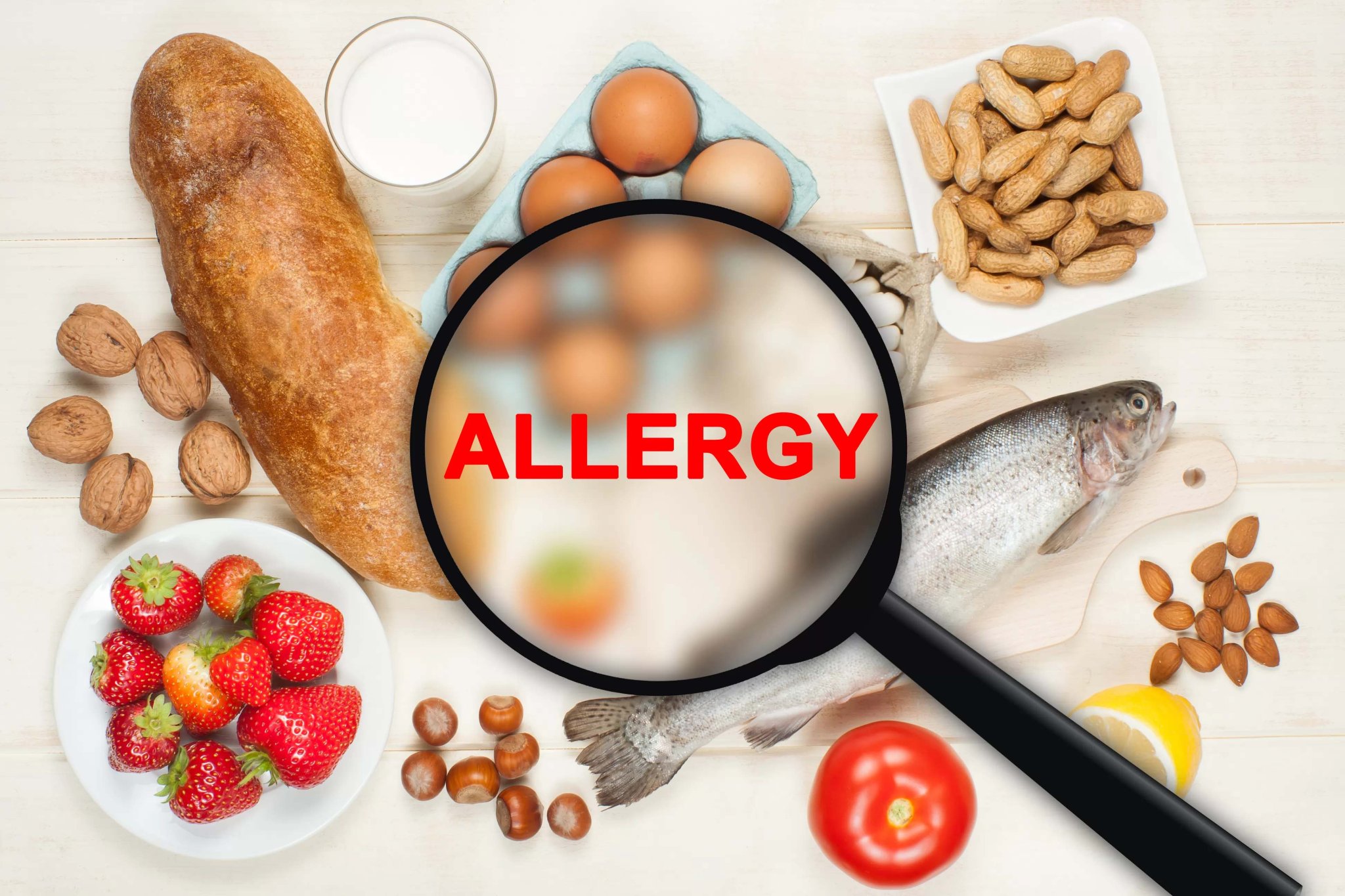
Symptoms don’t always show up immediately after eating, which makes diagnosis difficult for many people. Reactions might appear hours later, sometimes even the next day. This delay confuses people who expect instant discomfort or clear patterns. They may blame the wrong food or overlook subtle clues. Unlike food poisoning, which has rapid onset, intolerances and allergies can have irregular timing. Bloating, fatigue, headaches, or skin flare-ups are often dismissed as unrelated. This misdirection leads people to chase causes that aren’t really responsible. Over time, the confusion grows. Reactions repeat, but the logic behind them stays hidden without proper testing or food tracking.
The immune system reacts differently in allergies than it does in intolerances or sensitivities
The immune system reacts differently in allergies than it does in intolerances or sensitivities. Allergies involve immunoglobulin E (IgE), which triggers immediate and measurable immune responses. These include swelling, hives, vomiting, or even anaphylaxis. In contrast, food intolerances often involve the digestive system, not the immune system. Symptoms may result from enzyme deficiencies, like in lactose intolerance, or poor absorption. Sensitivities fall somewhere in between, with low-grade immune responses that are harder to detect. This distinction is essential because treatments and risks vary. Allergies require strict avoidance and emergency medication. Intolerances may allow small amounts or careful timing.
Lactose intolerance remains one of the most widely misunderstood non-allergic food responses
Lactose intolerance remains one of the most widely misunderstood non-allergic food responses. It stems from low lactase enzyme production in the small intestine. Without enough lactase, the body struggles to digest milk sugar properly. Undigested lactose ferments in the gut, causing gas, cramps, and diarrhea. This isn’t a dairy allergy, and it doesn’t involve the immune system. Some people tolerate aged cheeses or small yogurt servings because fermentation lowers lactose content. Still, many avoid dairy entirely, thinking it’s harmful across the board. This misunderstanding leads to unnecessary restrictions or substitution with inferior alternatives. Testing can confirm the exact tolerance threshold.
Gluten-related issues include celiac disease, non-celiac sensitivity, and wheat allergy
Gluten-related issues include celiac disease, non-celiac sensitivity, and wheat allergy. Though they involve the same food group, the mechanisms differ significantly. Celiac disease is an autoimmune disorder triggered by gluten in genetically predisposed individuals. It damages the small intestine and prevents nutrient absorption. Wheat allergy, by contrast, involves IgE antibodies and causes typical allergic reactions. Non-celiac gluten sensitivity presents with symptoms like bloating, fatigue, or brain fog but lacks clear biomarkers. These categories get confused often, especially in online discussions. People remove gluten from their diet without knowing which condition they have, sometimes missing critical medical advice or treatment.
Food allergy tests often detect markers, but results don’t always correlate with real-world reactions
Food allergy tests often detect markers, but results don’t always correlate with real-world reactions. Blood tests might show elevated IgE levels without any symptoms present. Skin prick tests might react to foods the person eats without issue. These tests reveal potential sensitivity, not guaranteed intolerance. False positives and false negatives are common. That’s why many allergists use elimination diets and food challenges to confirm results. Diagnosis is a process—not a single number or chart. Relying only on lab values leads to unnecessary anxiety or dietary limits. Testing must always be interpreted in clinical context, alongside detailed symptom history.
Some reactions are dose-dependent, which complicates how people approach trigger foods
Some reactions are dose-dependent, which complicates how people approach trigger foods. A small bite might cause no problem, while a full serving causes distress. This pattern suggests intolerance, not allergy. But the inconsistency makes it hard to avoid reactions completely. People may tolerate certain foods in restaurant portions but react at home. The food matrix—how it’s prepared, what it’s eaten with—also matters. Cooking, fermentation, and combination with fat or fiber change how the body responds. These layers make dietary management more nuanced than strict elimination. Total avoidance isn’t always necessary, but consistent tracking is key.
Elimination diets help uncover intolerances, but reintroduction phases are often rushed or skipped
Elimination diets help uncover intolerances, but reintroduction phases are often rushed or skipped. People remove suspect foods and feel better, so they never test them again. But improvement alone doesn’t confirm a diagnosis. It could be due to reduced inflammation overall, or improved gut rest. Reintroduction must be done carefully, with one food at a time, under consistent conditions. Otherwise, conclusions remain vague. Emotional responses also complicate reintroduction—fear of relapse sometimes clouds objective observation. That’s why guided elimination under clinical supervision works better than self-directed plans. Without proper structure, many eliminate foods long-term without knowing if it’s necessary.
Gut health plays a large role in how the body tolerates certain foods over time
Gut health plays a large role in how the body tolerates certain foods over time. Imbalances in the microbiome can increase sensitivity to normally harmless items. Antibiotic use, illness, or chronic stress alter microbial diversity and mucosal lining function. This weakens digestive resilience and increases permeability, leading to symptoms commonly labeled as intolerance. Restoring gut integrity through fiber, fermented foods, and reduced inflammation often improves tolerance. Many people regain the ability to eat formerly problematic foods after gut-focused healing. That’s why the same individual might tolerate eggs one year and react the next. Context matters as much as content.
Cross-reactivity occurs when proteins in different foods resemble each other closely
Cross-reactivity occurs when proteins in different foods resemble each other closely. This leads the immune system to mistake one for the other. For example, someone allergic to birch pollen might react to apples or carrots. Shellfish and dust mites share similar proteins. These patterns confuse diagnosis because the reaction doesn’t match obvious triggers. People may react to one food only during certain seasons or only when eaten raw. Understanding cross-reactivity requires familiarity with molecular mimicry—not just ingredient lists. Eliminating foods without understanding this phenomenon leads to over-restriction and reduced diet quality. Identifying root mechanisms avoids unnecessary complexity.
Food labels don’t always reveal hidden sources of common allergens or reactive compounds
Food labels don’t always reveal hidden sources of common allergens or reactive compounds. Ingredients like “natural flavors” or “spices” can mask problematic components. Cross-contamination also occurs during processing, especially in bulk facilities. Products labeled “dairy-free” may still contain casein or whey derivatives. Reading labels requires vigilance, and even then, some risks remain. People with severe allergies must contact manufacturers directly to confirm safety. Those with intolerances should look beyond marketing terms and assess how foods feel after consumption. Awareness, not paranoia, leads to better choices. Over time, label literacy becomes a necessary skill for dietary control.
